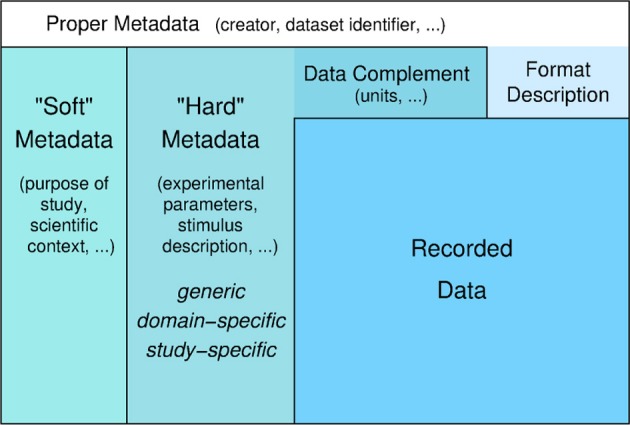Figure 1.

Levels of (meta)data. Recorded data and additional information that is necessary for understanding and appropriate analysis of the data. Information about the format in which the data are stored is required to read the data. Information that complements the raw stored numbers, such as sampling rate, scaling factors, units, is required to understand the data as measured signals. To meaningfully analyze the data, information about the experimental context is necessary, like conditions of preparation, stimulation, etc. This information in principle can be formalized and stored in machine-readable form (“hard metadata”) so that it can be used for data selection and analysis. This metadata can be further categorized into generic, domain-specific, and study-specific information. “Soft metadata” is the information about the overall scientific context and aim of the study, reasons for choosing certain parameters, etc., for which currently we have no way of formalizing or machine-processing. The distinction between supplementing data and proper metadata is to some degree arbitrary. For example, the date when an experiment was performed might usually be considered as proper metadata. However, in some analysis the time between experiments might be an important parameter to be taken into account. In this case, the date of the experiments can be used as data in the analysis to determine this information.
